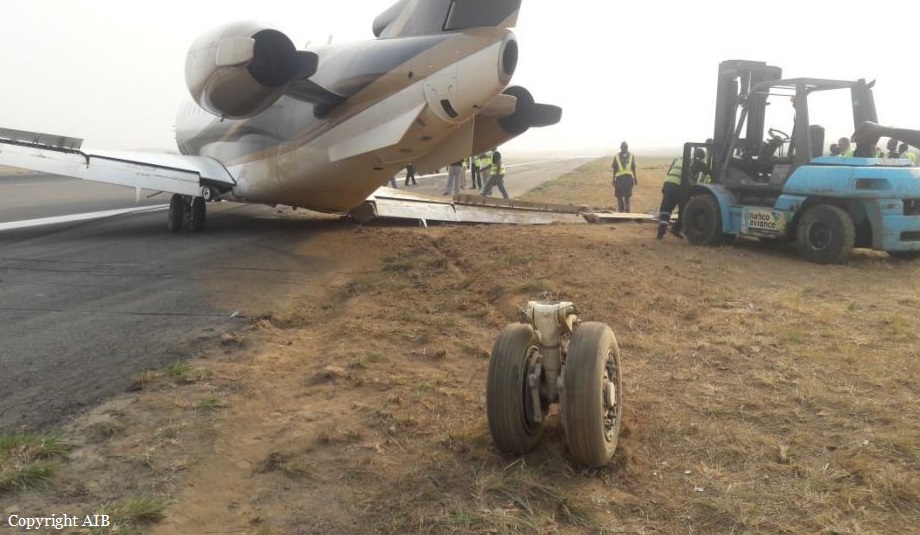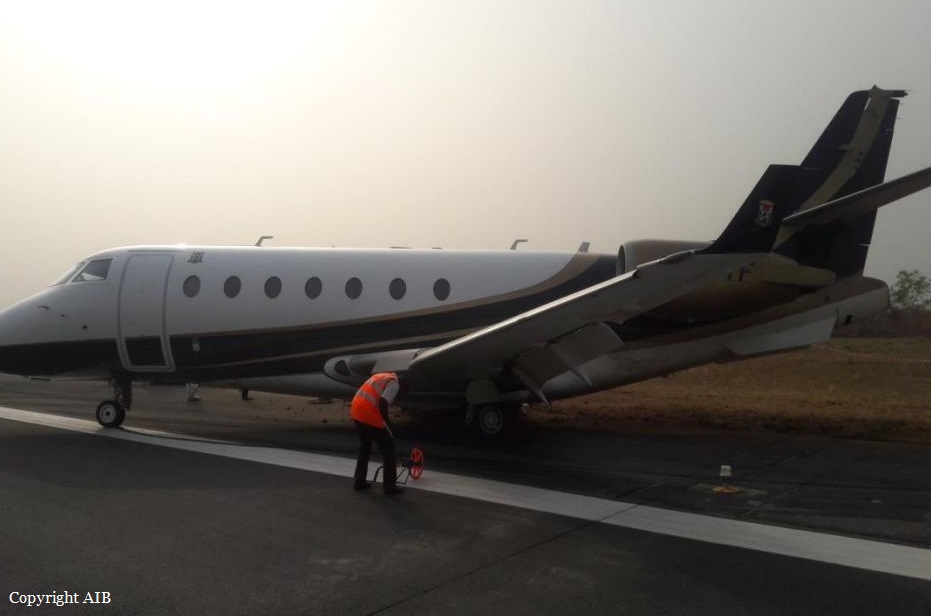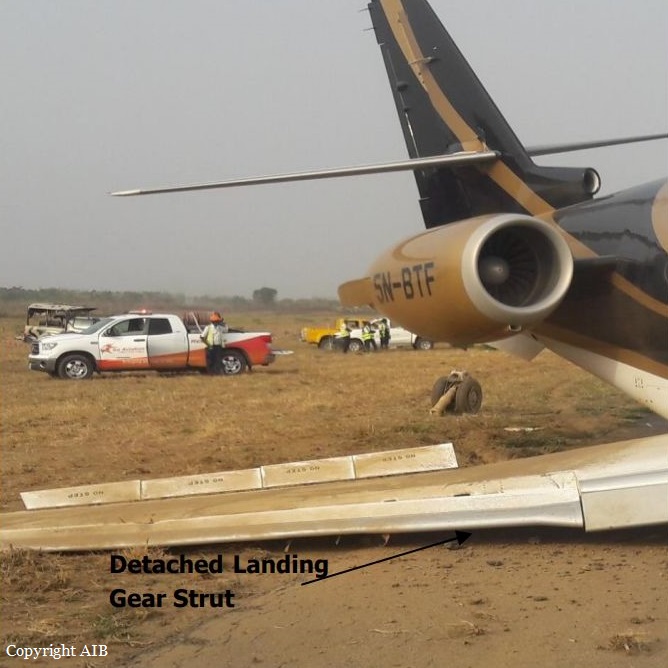Country
Crash of a Gulfstream G200 in Moscow
Date & Time:
Feb 26, 2019 at 1244 LT
Registration:
4K-AZ88
Survivors:
Yes
Schedule:
Baku - Moscow
MSN:
189
YOM:
2008
Flight number:
EWS88
Crew on board:
3
Crew fatalities:
Pax on board:
3
Pax fatalities:
Other fatalities:
Total fatalities:
0
Captain / Total hours on type:
2356.00
Copilot / Total hours on type:
609
Aircraft flight hours:
4174
Aircraft flight cycles:
1787
Circumstances:
The airplane departed Baku-Bina Airport on a charter flight to Moscow, carrying three passengers and three crew members. Following an uneventful flight, the crew was cleared for an approach to Moscow-Sheremetyevo Airport runway 24C. The aircraft landed at a speed of 150 knots some 250 metres past the runway threshold. After touchdown, the crew started the braking procedure and activated the thrust reversers. After a course of several hundred metres, the aircraft deviated to the left, made an almost 180 turn and veered off runway to the left. While contacting soft ground, the right main gear was torn off and the aircraft came to rest in a snow covered area. All six occupants evacuated safely and the aircraft was damaged beyond repair.
Probable cause:
The reason for the accident with the Gulfstream G200 4K-AZ88 was the stowing of the right-engine reverser by the pilot KVS from maximum thrust reversal while maintaining maximum thrust reversal on the left engine, which led to the appearance of a significant turning moment to the left. The aircraft turning to the left in the presence of a cross wind to the right, as well as turbulence of the airflow near the rudder due to the open thrust reversal mechanism of the left engine and possible ice deposition on the outer surfaces of the aircraft, which led to the development of a significant swing moment on the rudder. The development of a significant articulated moment on the rudder, in the absence of power steering in the rudder control system, led to its deviation to the leftmost position despite significant (up to 82 kg or 180 pounds) forces exerted by the crew on the pedals. The deviation of the rudder (pedals) to the left also led to the deviation of the nose wheel to the left. The total moment from the running reverse of the left engine, from the right engine in direct draft mode, and from the rudder and nose wheel deflection to the left, led to the aircraft rolling out of the runway and its damage. Separate braking applied by the crew could not prevent the aircraft from rolling out.
The following contributing factors were identified:
- The crew did not take into account the provisions of the AOM about the possible "destabilizing" effect of the thrust reverse when landing with a cross wind on the runway with a reduced braking coefficient;
- Increased psycho-emotional tension of the crew members due to long dissatisfaction and emotional discussion of instructions and actions of ATC controllers. At the same time, the instructions and actions of the ATC service controllers were in line with established procedures.
The following contributing factors were identified:
- The crew did not take into account the provisions of the AOM about the possible "destabilizing" effect of the thrust reverse when landing with a cross wind on the runway with a reduced braking coefficient;
- Increased psycho-emotional tension of the crew members due to long dissatisfaction and emotional discussion of instructions and actions of ATC controllers. At the same time, the instructions and actions of the ATC service controllers were in line with established procedures.
Final Report:
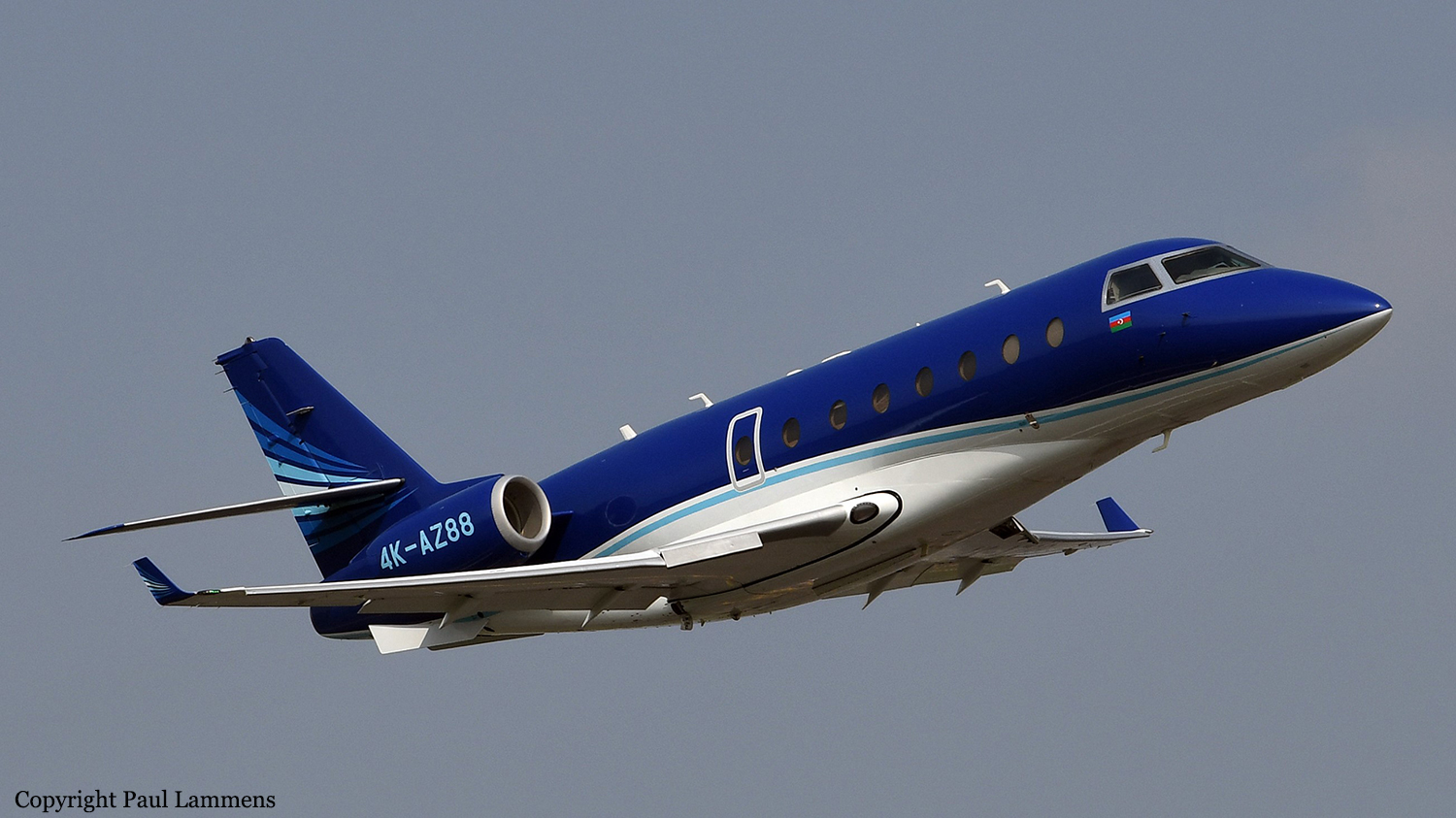
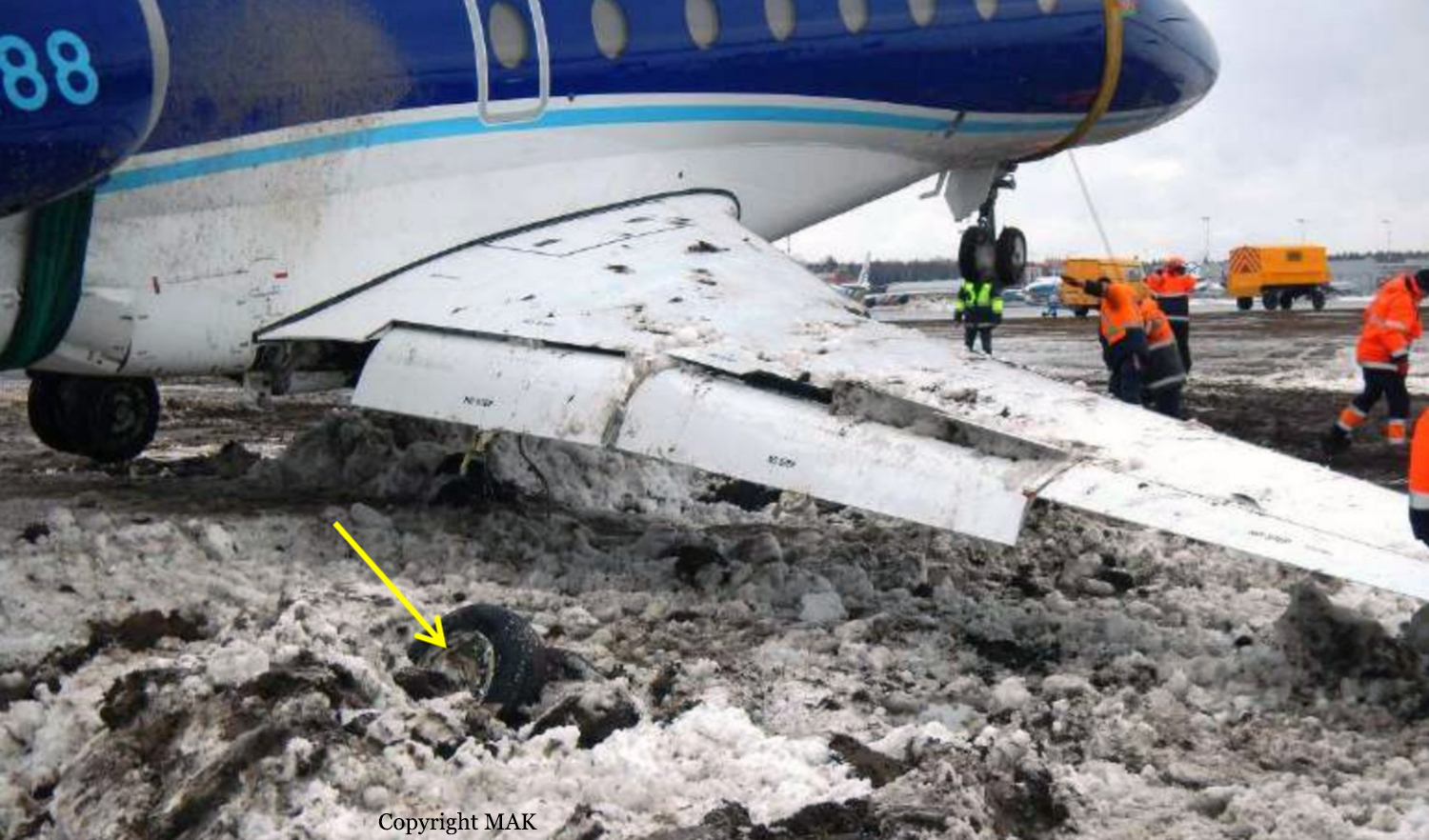
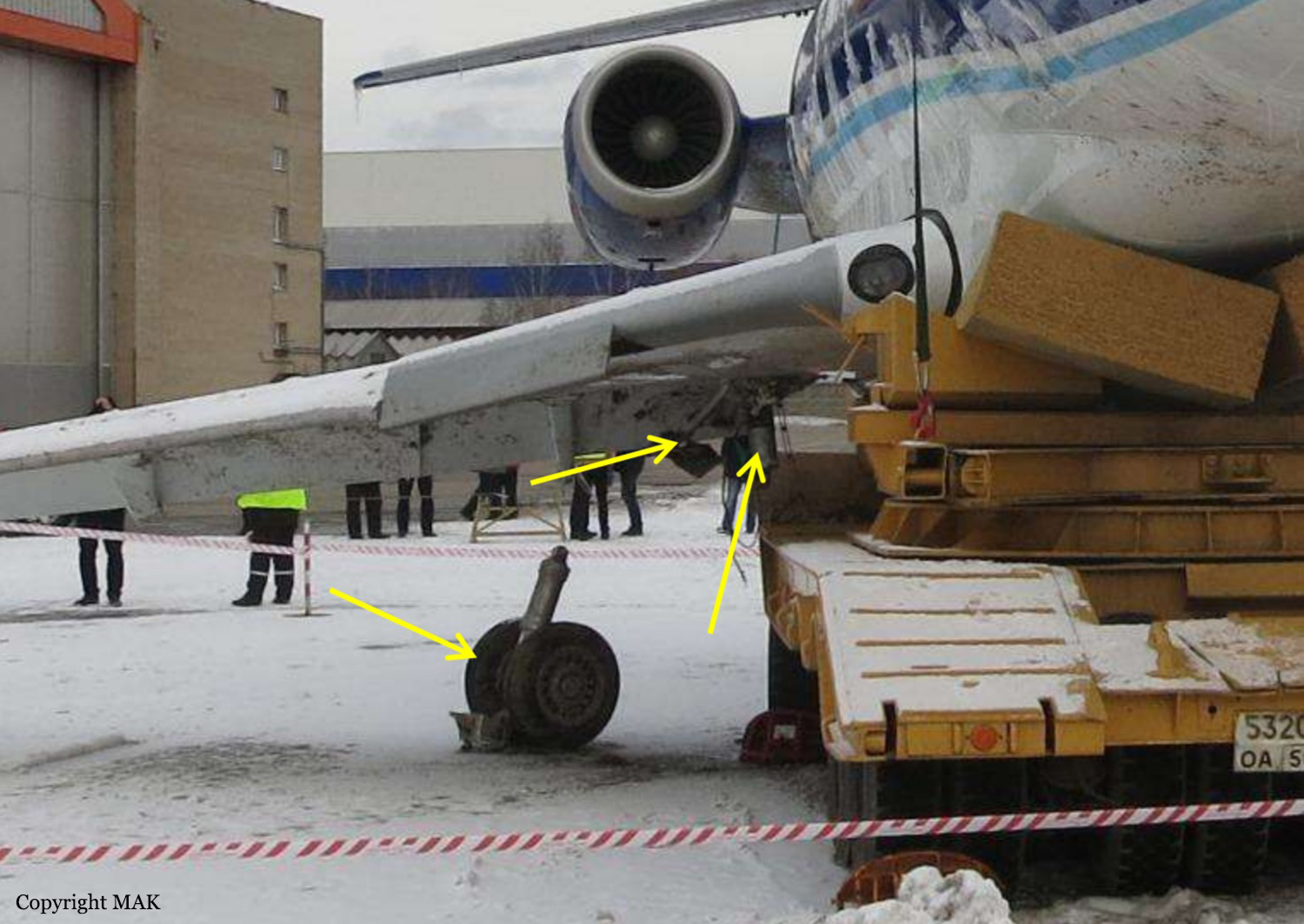
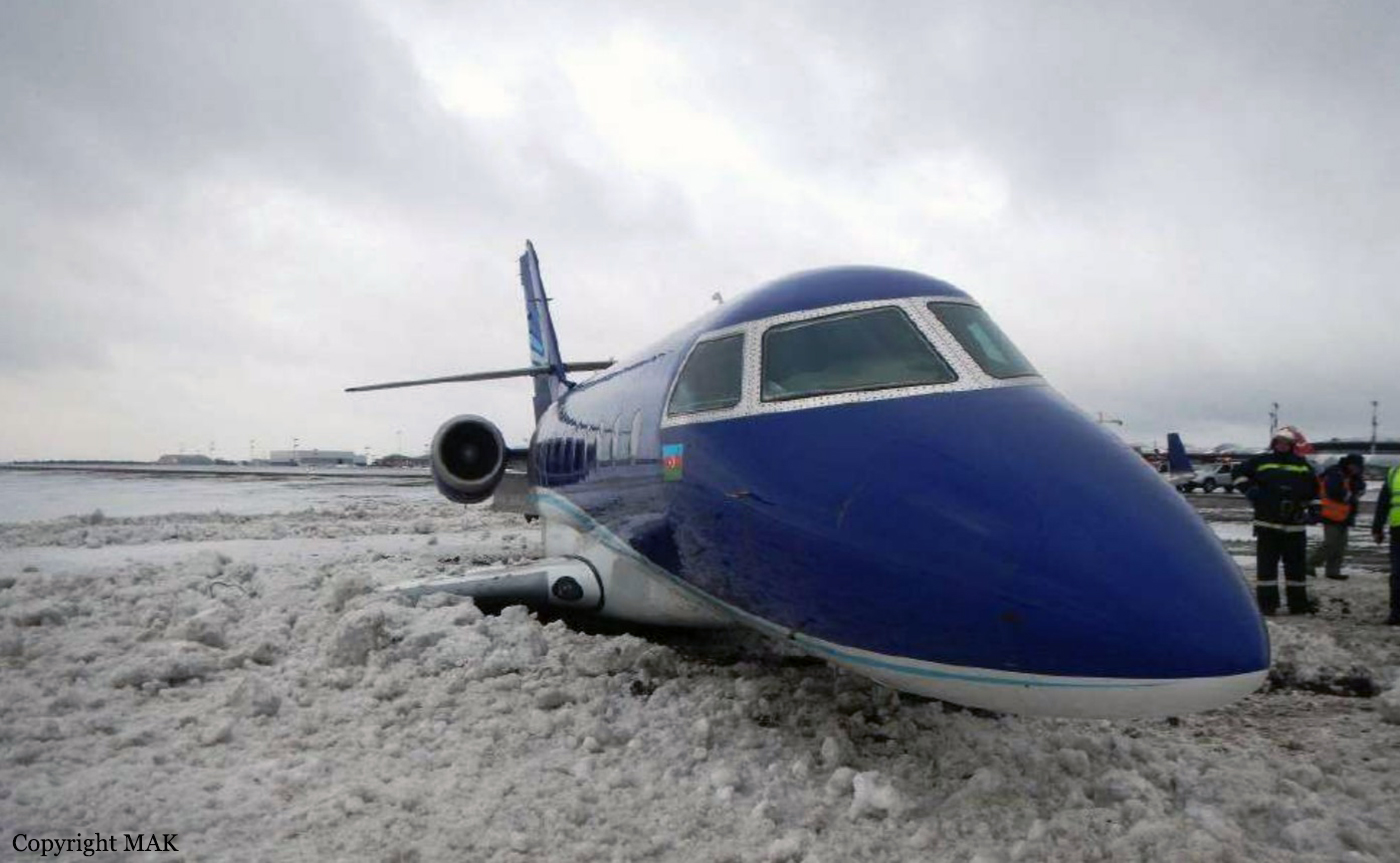
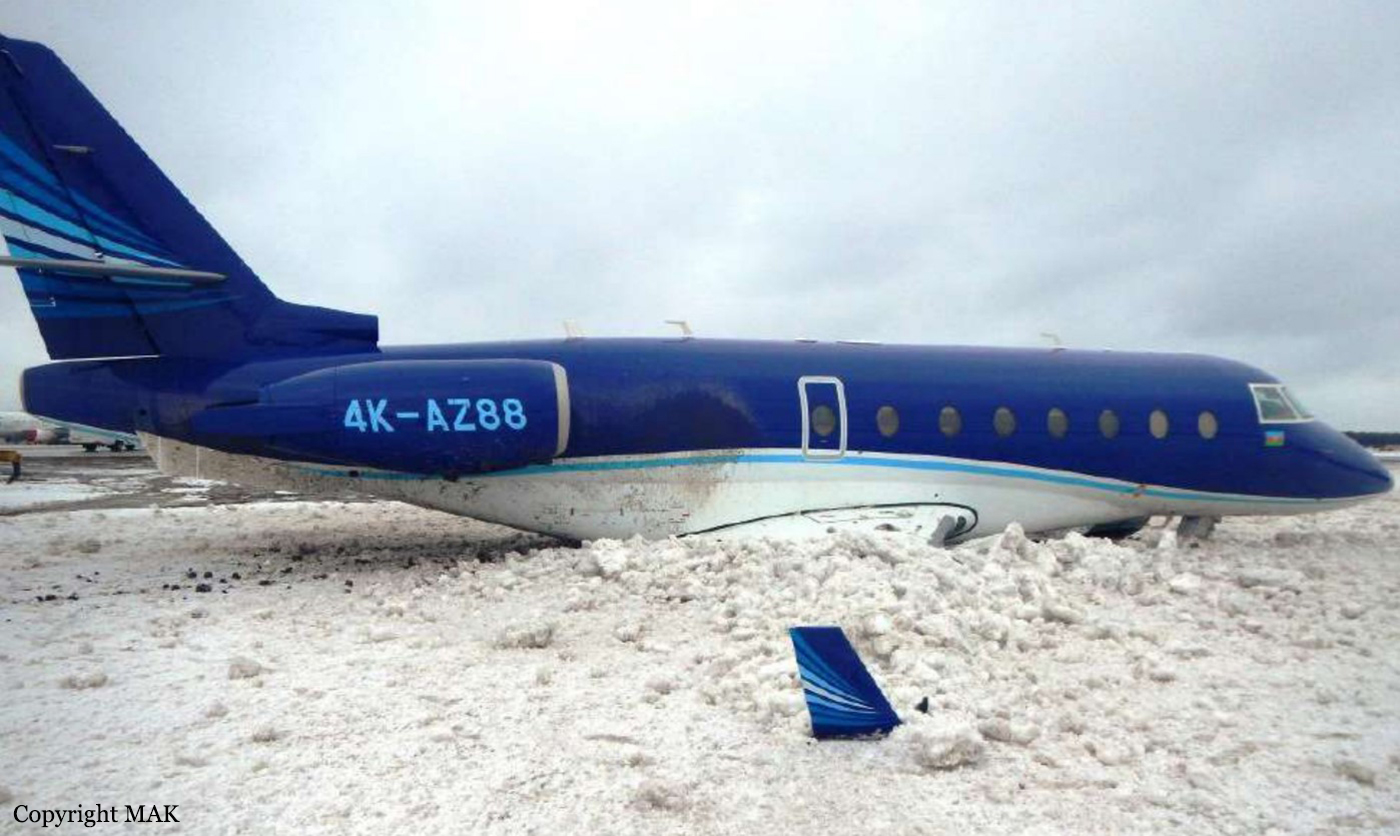
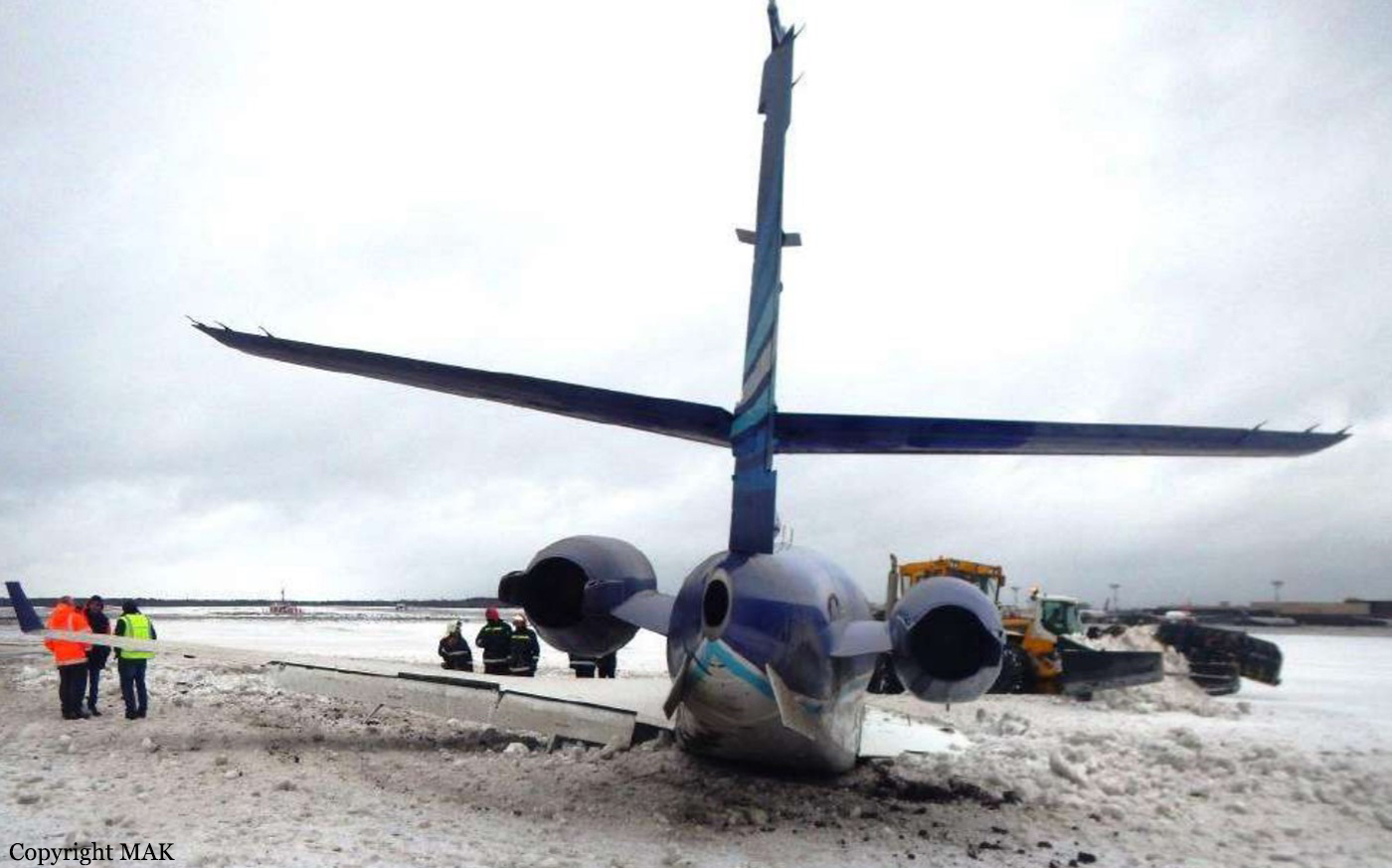
Crash of a Gulfstream G200 in Tegucigalpa
Date & Time:
May 22, 2018 at 1119 LT
Registration:
N813WM
Survivors:
Yes
Schedule:
Austin – Tegucigalpa
MSN:
54
YOM:
2001
Crew on board:
2
Crew fatalities:
Pax on board:
4
Pax fatalities:
Other fatalities:
Total fatalities:
0
Aircraft flight hours:
5299
Circumstances:
On final approach to runway 02, the copilot informed the captain about the fact that the approach speed was too high by 20 knots to the reference speed. The captain replied he would correct this but the airplane landed too far down runway 02, about 993 metres before the end of the runway which is 2,010 metres long but with a displaced threshold, giving a landing distance available of 1,700 metres. Upon touchdown, the aircraft's speed was 142 knots, about 14 knots above the speed reference according to existing conditions and weight and balance. Unable to stop within the remaining distance, the airplane overran, went down an embankment, crossed a road and came to rest against a second embankment, broken in two. All six occupants were slightly injured and the aircraft was destroyed. Owned by TVPX, it was operated by Silver Air.
Probable cause:
The accident was the consequence of the followings:
- The crew completed an approach at a speed higher than the reference speed for weight and balance specified in the aircraft checklist,
- Lack of specific information on the length of the runway at Toncontín International Airport by the crew for the approach to runway 02, when landing almost halfway down the runway leaving little distance for effective braking of the systems,
- A late activation of the thrust reverser systems about 0:13 seconds after touchdown was considered as a contributing factor,
- Existing weather conditions were not considered as a contributing factor.
- The crew completed an approach at a speed higher than the reference speed for weight and balance specified in the aircraft checklist,
- Lack of specific information on the length of the runway at Toncontín International Airport by the crew for the approach to runway 02, when landing almost halfway down the runway leaving little distance for effective braking of the systems,
- A late activation of the thrust reverser systems about 0:13 seconds after touchdown was considered as a contributing factor,
- Existing weather conditions were not considered as a contributing factor.
Final Report:

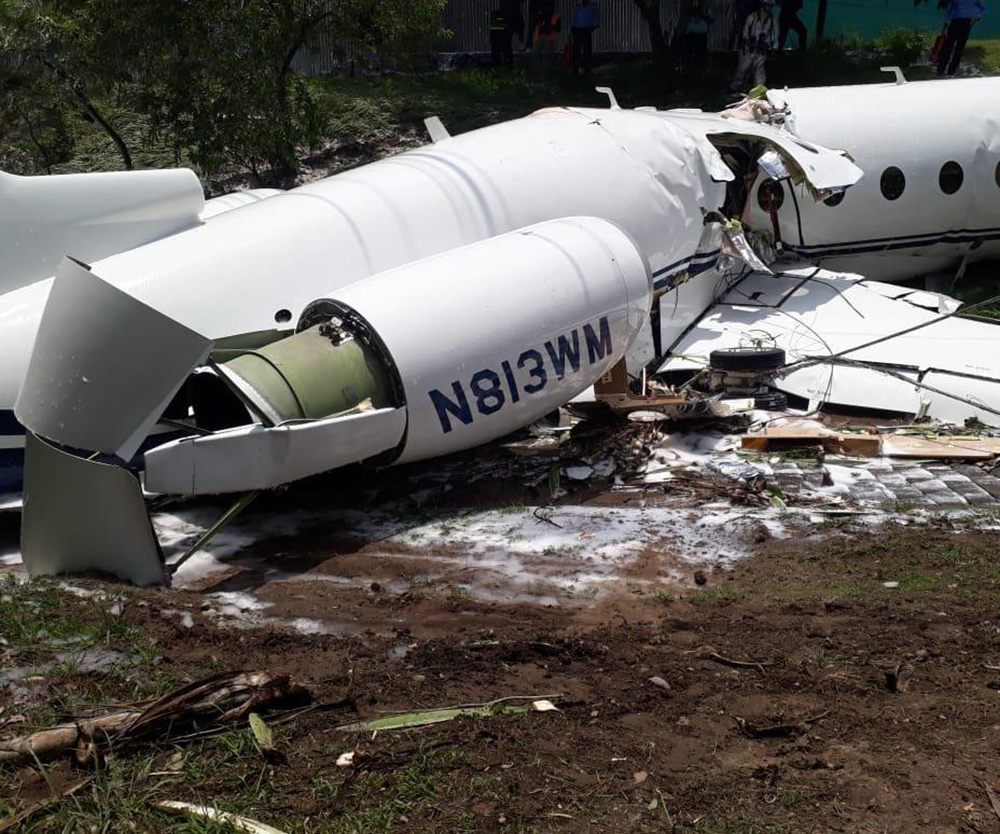
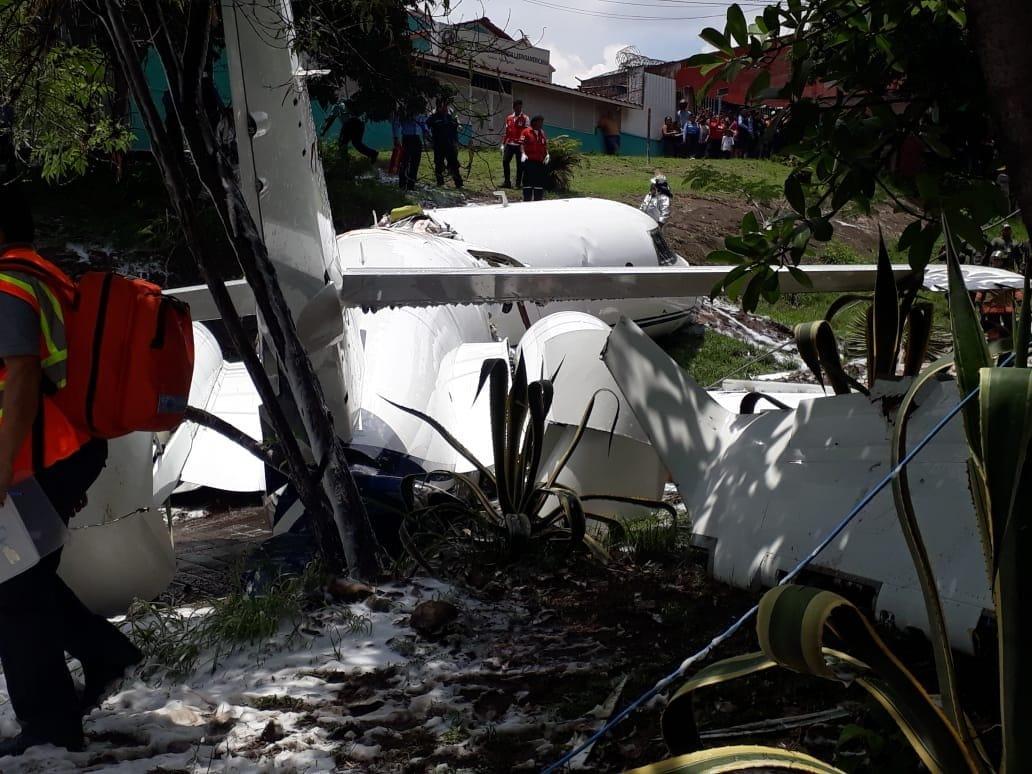
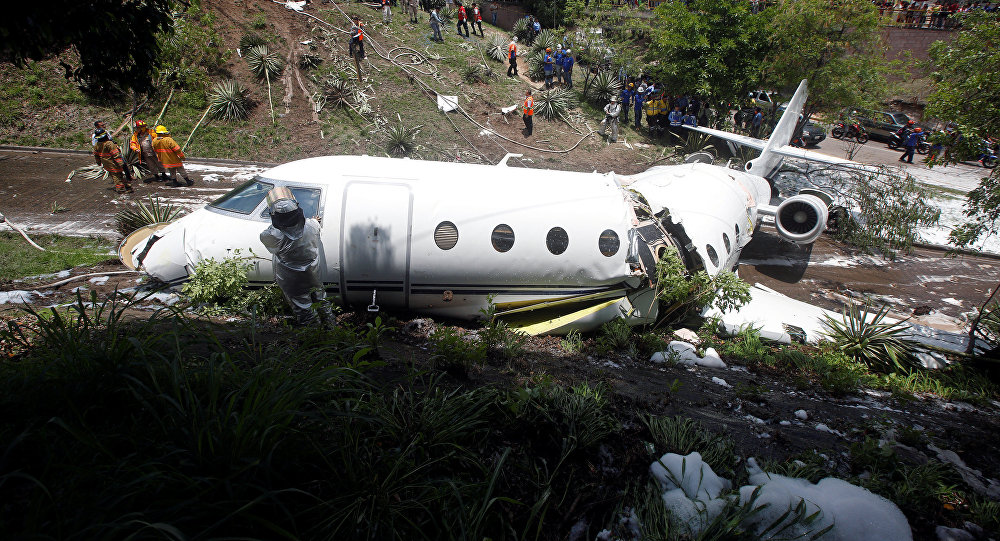
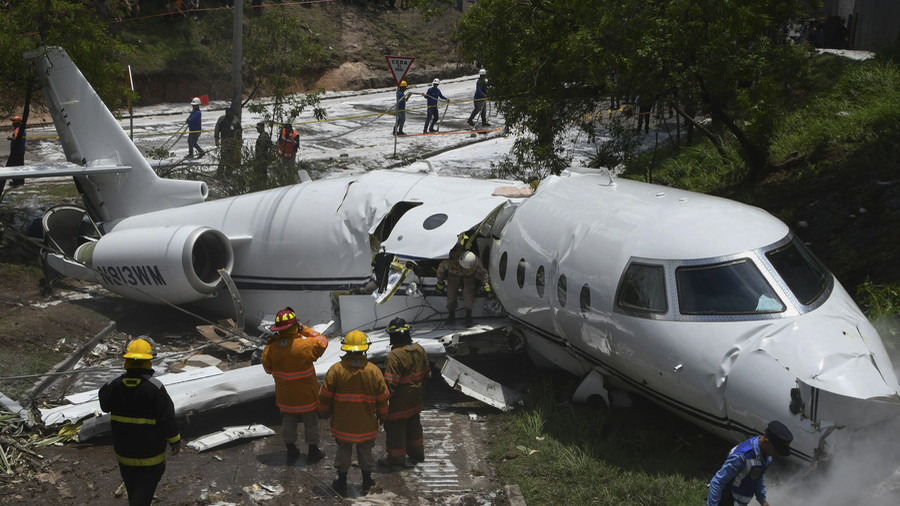

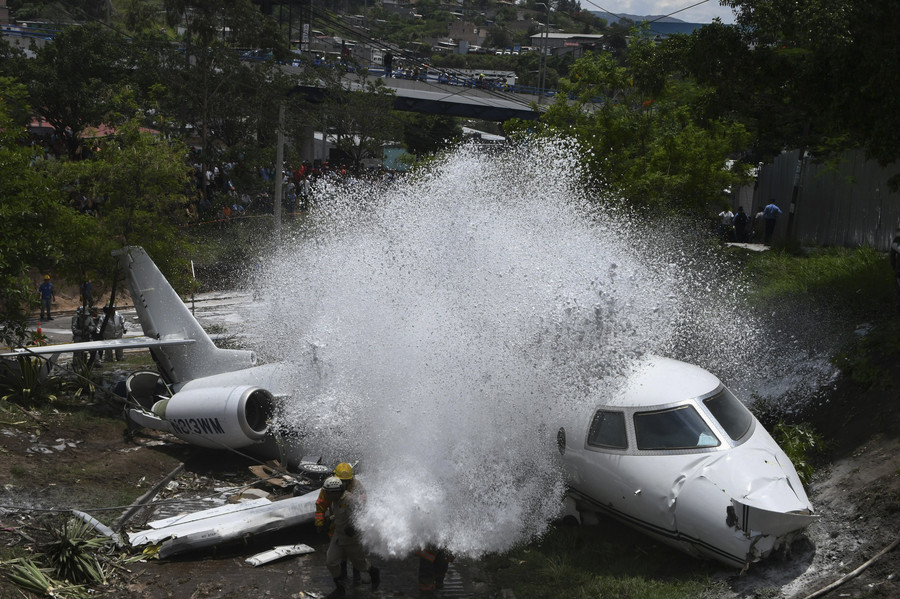
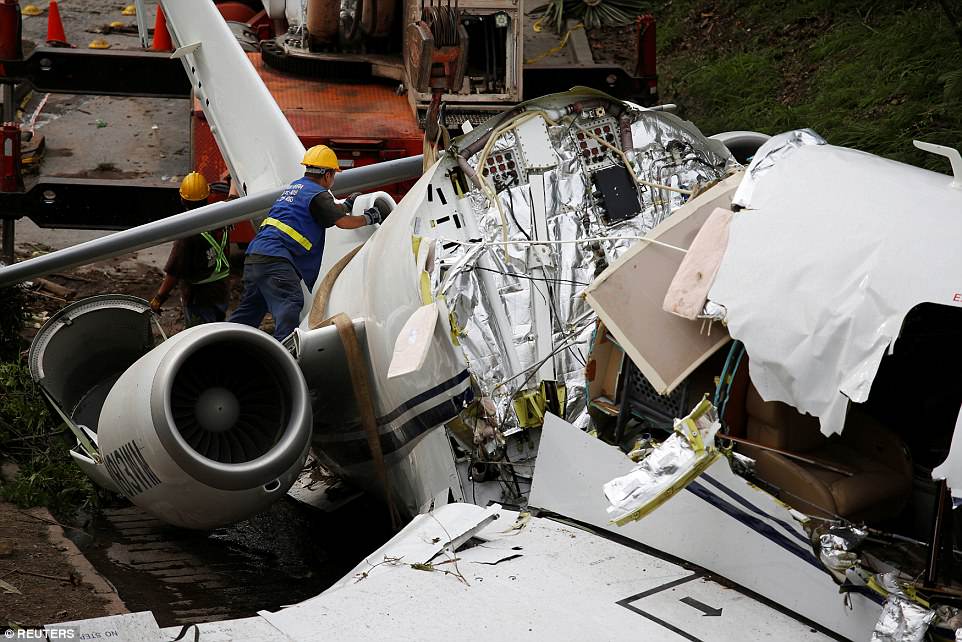
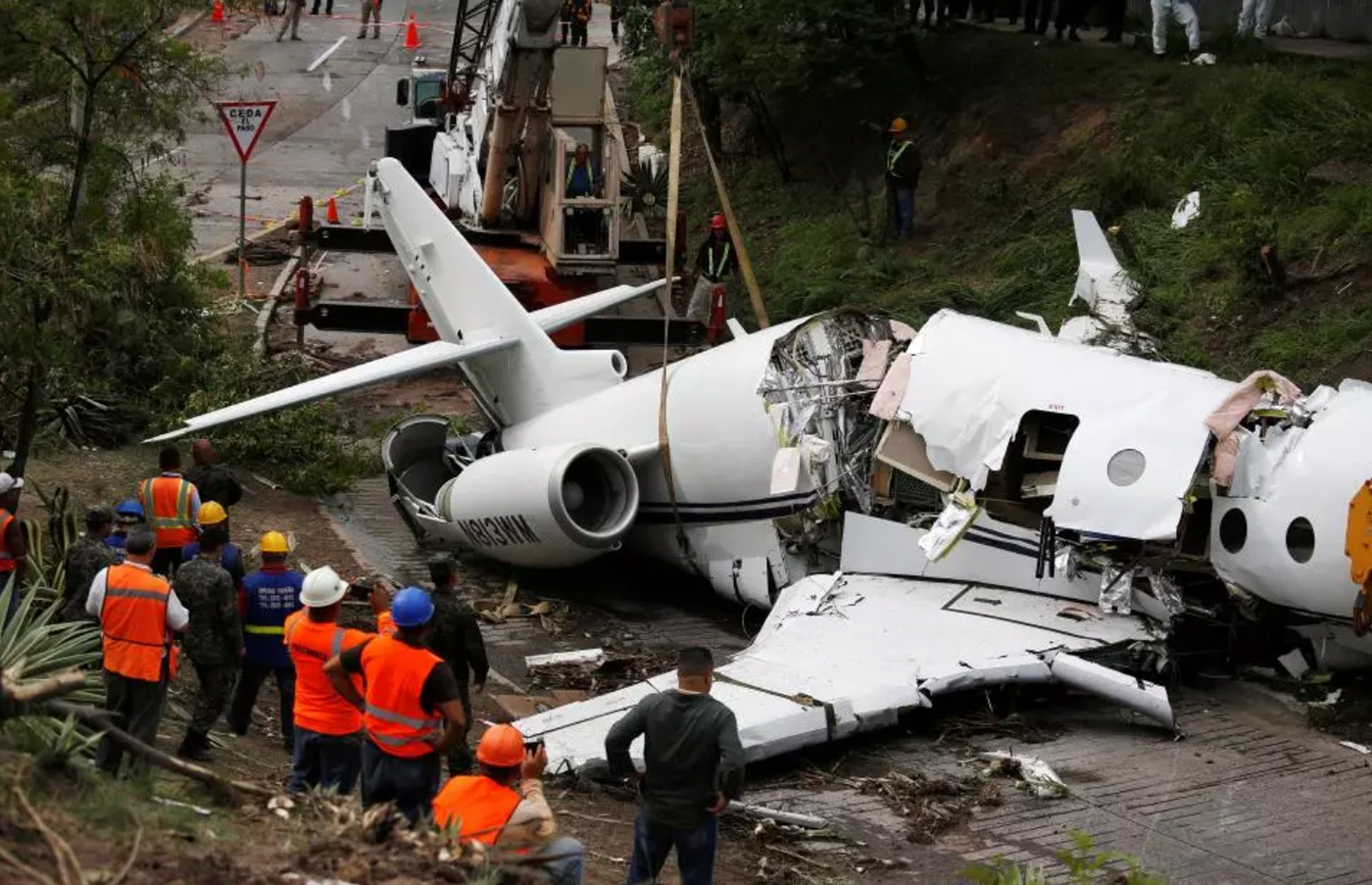
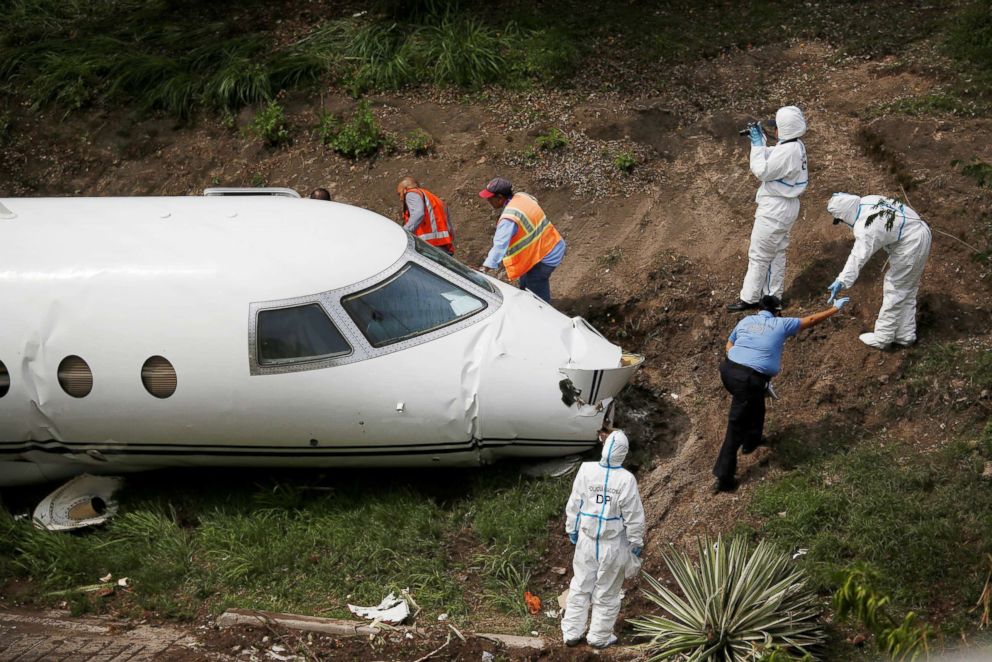
Crash of a Gulfstream G200 in Yangzhou
Date & Time:
May 20, 2018 at 1507 LT
Registration:
B-8129
Survivors:
Yes
Schedule:
Yangzhou - Yangzhou
MSN:
134
YOM:
2006
Crew on board:
3
Crew fatalities:
Pax on board:
0
Pax fatalities:
Other fatalities:
Total fatalities:
0
Captain / Total hours on type:
1181.00
Copilot / Total hours on type:
246
Aircraft flight hours:
2235
Aircraft flight cycles:
1114
Circumstances:
The aircraft departed Yanzhou-Taizhou Airport runway 35 at 1359LT on a local training flight, carrying two pilots under supervision and one instructor. The crew completed six landings without any incidents. and then changed seats, the instructor seating in the left front seat and the pilot under training in the right front seat. On final approach to runway 35, at a height of about 50 feet, the aircraft followed a steep descent and landed 500 metres past the runway threshold to the right of the runway centerline with a 4,5° deviation to the right. The copilot elected to correct this when the aircraft veered to the left, exited the runway then deviated to the right and came back on the runway. Then it veered off runway to the right, lost its both main gears and came to rest in a grassy area. All thre crew members evacuated safely and the aircraft was damaged beyond repair.
Probable cause:
The accident was the consequence of a series of errors on part of the crew. The following findings were identified:
- The rate of descent on short final was escessive (sink rate),
- The aircraft landed to the right of the runway centerline with a 4,5° deviation to the right,
- The copilot actions were excessives and the aircraft veered to the left,
- The instructor did not intervene in due time to expect recovery.
- The rate of descent on short final was escessive (sink rate),
- The aircraft landed to the right of the runway centerline with a 4,5° deviation to the right,
- The copilot actions were excessives and the aircraft veered to the left,
- The instructor did not intervene in due time to expect recovery.
Final Report:
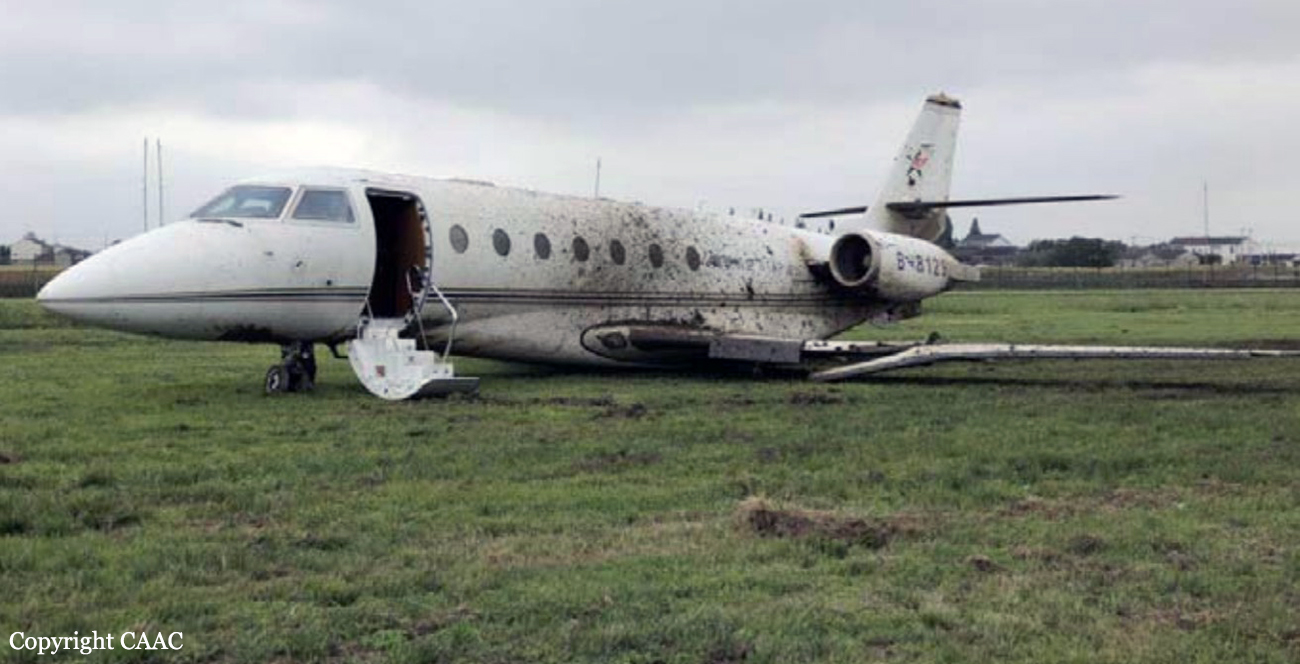
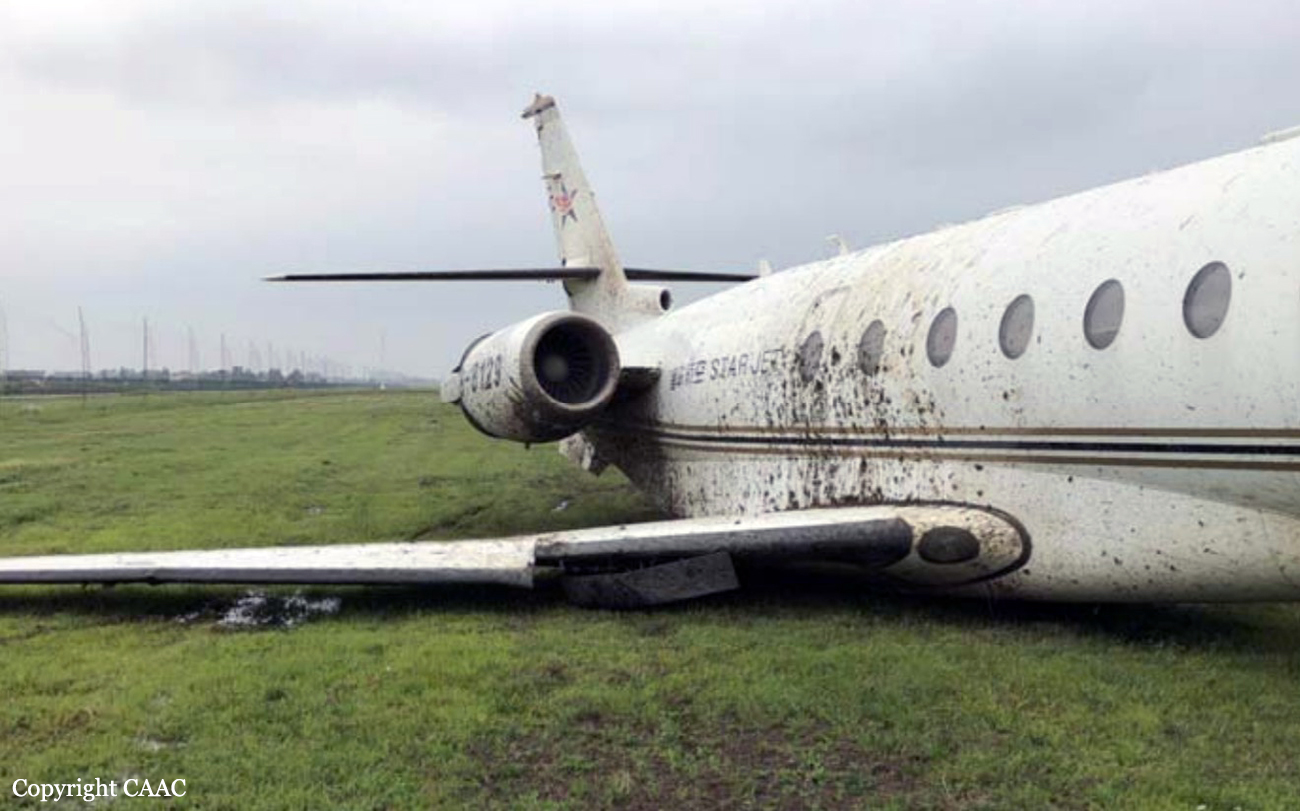
Crash of a Gulfstream G200 in Abuja
Date & Time:
Jan 25, 2018 at 1520 LT
Registration:
5N-BTF
Survivors:
Yes
Schedule:
Lagos - Abuja
MSN:
180
YOM:
2007
Crew on board:
3
Crew fatalities:
Pax on board:
4
Pax fatalities:
Other fatalities:
Total fatalities:
0
Captain / Total hours on type:
280.00
Copilot / Total hours on type:
93
Aircraft flight hours:
1421
Aircraft flight cycles:
921
Circumstances:
On 25th January 2018 at 14:28 h, a Gulfstream 200 (G200) aircraft with nationality and registration marks 5N-BTF operated by Nestoil Plc, departed Murtala Mohammed International Airport, Lagos (DNMM) as a charter flight to Nnamdi Azikiwe International Airport, Abuja (DNAA) on an Instrument Flight Rules (IFR) flight plan. Onboard were four passengers and three flight crew members. The Pilot in command (PIC) was the Pilot Monitoring (PM) and the Co-pilot was the Pilot Flying (PF). The departure, cruise and approach to Nnamdi Azikiwe International Airport were normal. At 14:45 h, 5N-BTF contacted Abuja radar and was subsequently cleared for Radar vectors ILS approach Runway 22. Abuja Airport Automatic Terminal Information Service (ATIS) Papa for time 14:20 h was monitored as follows; “Main landing runway 22, wind 110/07 kt, Visibility 3,500 m in Haze, No Significant Clouds, Temperature/Dew point 33/- 01°C, QNH 1010 hPa, Trend No Significant Change, End of Information Papa”. At 15:17 h, 5N-BTF reported 4 NM on Instrument approach (ILS) and was requested to report 2 NM because there was a preceding aircraft (Gulfstream 5) on landing roll. Thereafter, 5N-BTF was cleared to land runway 22 with reported wind of 070°/07 kt. At 15:18 h, the aircraft touched down slightly left of the runway centre line. According to the PF, in the process of controlling the aircraft to the centre line, the aircraft skidded left and right and eventually went partly off the runway to the right where it came to a stop. In his report, the PM stated that on touchdown, he noticed the aircraft oscillating left and right as brakes were applied. The oscillation continued to increase and [the aircraft] eventually went off the runway to the right where the aircraft came to a stop, partially on the runway. During the post-crash inspection, the investigation determined that the skid marks on the runway indicated that the aircraft steered in an S-pattern continuously with increasing amplitude, down the runway. On the last right turn, the aircraft exited the right shoulderof the runway, the right main wheel went into the grass and on the final left turn, the right main landing gear strut detached from its main attachment point after which the aircraft finally came to a complete stop on a magnetic heading of 160°. The ATC immediately notified the Aircraft Rescue and Fire Fighting Services (ARFFS), Approach Radar Control, and other relevant agencies about the occurrence. All persons on board disembarked with no injuries. Instrument Meteorological Conditions (IMC) prevailed at the time of the occurrence. The serious incident occcurred in daylight.
Probable cause:
Causal Factor:
The use of improper directional control techniques to maintain the aircraft on the runway.
Contributory Factor:
Improper coordination in taking over control of the aircraft by the PM which was inconsistent with Nestoil SOP.
The use of improper directional control techniques to maintain the aircraft on the runway.
Contributory Factor:
Improper coordination in taking over control of the aircraft by the PM which was inconsistent with Nestoil SOP.
Final Report:
